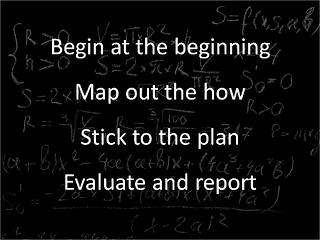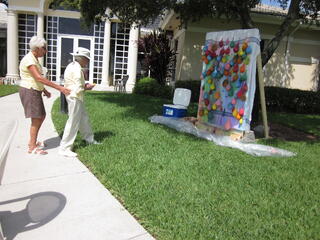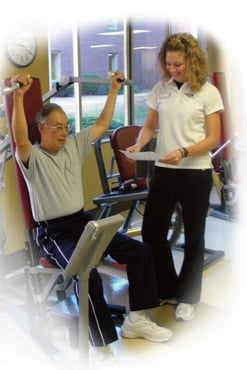Pardon me while I use our blog to rant. It doesn't happen often, but apparently there was no amount of pounding the pavement (aka running) that was going to get this out of my head. Lacking other healthy tools to cope with very bad corporate wellness practice, I'm turning to the blog to pound it out on the keyboard. You should stop reading if you don't care about employee engagement, human capital, and ROI in corporate wellness. Shamelessly, this blog is more for me than it is for you.
Ok - disclaimer provided. Here we go.
There's so much buzz around corporate wellness, it's dizzying. Who can keep track of all the apps, gadgets, providers, platforms, and statistics in employee health promotion?! We're too busy helping people make better choices to keep track of this stuff. Thus, I join other organizations who provide me with updates in the industry periodically; it takes the burden off me feeling like I always have to be search, search, searching for what's up and coming.
It all started with an email.
So the other day I got an email, much like many other emails, in which a promotion around employee engagement was being peddled. You get these emails, I know you do. This one, in particular, was from a well-known clearinghouse of resources for corporate wellness professionals, and my hunch is that they have a HUGE reach across the US. Provider organizations pay to be promoted by via email to the membership list for this "clearinghouse organization".
Let me be clear - I'm not begrudging the organization who sent me the email, or the provider company who paid to reach my inbox. (Though I do feel a little sorry for both who may not know the painful truth about outbound marketing.) The marketing message in that email, however, is at best suspect, and at worst, completely misleading and disingenuous to the hard fought, small gain work that is employee health promotion.
"Got Engagement"
This was the focus of the marketing email - the vendor was offering their product/service and promoting that they had the key ingredient for employee engagement. Maybe they do (it's kind of the silver bullet in corporate wellness...who knows, maybe this group has it all figured out). But to promote it in a way that engagement from employees is something you go "get", that it's algebraic or formulary, that there is something you simply add to your corporate wellness strategy recipe, is completely off the mark. You don't add a vendor, a worksite fitness center, a health coach, or change a policy about flex time and BAM! Engagement! (Cue triumphant music.)
has it all figured out). But to promote it in a way that engagement from employees is something you go "get", that it's algebraic or formulary, that there is something you simply add to your corporate wellness strategy recipe, is completely off the mark. You don't add a vendor, a worksite fitness center, a health coach, or change a policy about flex time and BAM! Engagement! (Cue triumphant music.)
No, ladies and gentlemen, absolutely not. The battle for employee engagement in corporate health promotion is won in relationships and over time, and with the evolution of trust and loyalty in the workplace. Offering biometric screenings and cool online HRA that gives you a personal wellness score isn't enough. An onsite fitness center isn't enough. (Believe me... for NIFS business, I wish it was!) And you can't buy your way into the hearts of your employees with trinkets and trips, and other incentives.
If you want engagement in your workforce around your corporate wellness initiatives, you start with relationships. You have to work at it by working with your workforce to understand them, their needs, their fears, their hopes. You have to give a little, learn a little, and step out on that relationship-building edge a little.
(I feel a sappy song coming on, so I'll wrap it up here.)
You want your workforce to engage? Treat them like people, get your head out of the corporate wellness ROI clouds, and for crying out loud, quit referring to your workforce as "Human Capital".
Want to confess...I mean comment on this post? Have an entirely different point of view? Share it below. Maybe it'll be the start of a beautiful relationship!







 wellness programs and services come in all shapes and sizes, and it's rare these days for communities NOT to promote some type of "wellness" programming for their residents. Clearly, communities are getting the message about how important resident well-being really is for both the resident and the business.
wellness programs and services come in all shapes and sizes, and it's rare these days for communities NOT to promote some type of "wellness" programming for their residents. Clearly, communities are getting the message about how important resident well-being really is for both the resident and the business.

 In our more than 20 years of managing clients' fitness centers, we’ve filled out our fair share of requests for proposals (RFPs). We’ve seen hundreds of questions, and we’ve written hundreds of pages. (It’s a lot of tree-killing, we know.)
In our more than 20 years of managing clients' fitness centers, we’ve filled out our fair share of requests for proposals (RFPs). We’ve seen hundreds of questions, and we’ve written hundreds of pages. (It’s a lot of tree-killing, we know.) among owners and operators of senior living communities toward a focus on resident wellness. The movement is based in
among owners and operators of senior living communities toward a focus on resident wellness. The movement is based in 
 Of course, it’s horribly self-serving for us to say that staffing your onsite fitness center and wellness initiatives isn’t a DIY (do it yourself) project. We’re not above shameless self-promotion, but the truth is, the consequences of making fitness center management a DIY initiative can be costly. Read on to learn NIFS top three reasons to outsource fitness center management of your retirement community or worksite fitness center.
Of course, it’s horribly self-serving for us to say that staffing your onsite fitness center and wellness initiatives isn’t a DIY (do it yourself) project. We’re not above shameless self-promotion, but the truth is, the consequences of making fitness center management a DIY initiative can be costly. Read on to learn NIFS top three reasons to outsource fitness center management of your retirement community or worksite fitness center. 
 has it all figured out). But to promote it in a way that engagement from employees is something you go "get", that it's algebraic or formulary, that there is something you simply add to your corporate wellness strategy recipe, is completely off the mark. You don't add a vendor, a worksite fitness center, a health coach, or change a policy about flex time and BAM! Engagement! (Cue triumphant music.)
has it all figured out). But to promote it in a way that engagement from employees is something you go "get", that it's algebraic or formulary, that there is something you simply add to your corporate wellness strategy recipe, is completely off the mark. You don't add a vendor, a worksite fitness center, a health coach, or change a policy about flex time and BAM! Engagement! (Cue triumphant music.)